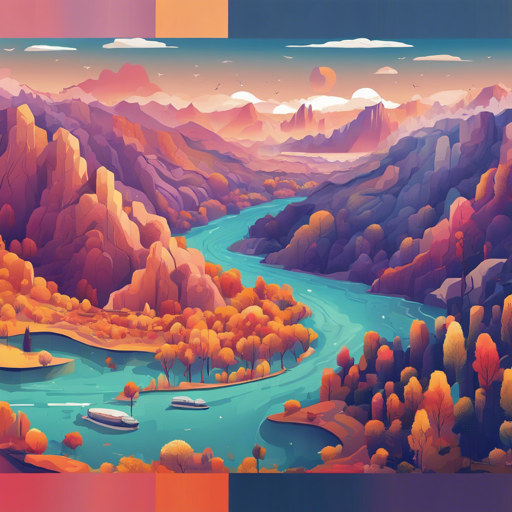Have you ever wanted to transform a series of overlapping images into a breathtaking panoramic view? Thanks to the power of programming, particularly image processing libraries, this task can be made feasible and fun! In this article, we will walk you through the process of stitching images together using Python. The steps outlined are straightforward, and by the end, you will have a beautiful panorama to show off!
Requirements
Before diving into the process, ensure you install the following Python packages:
- numpy = 1.24.3
- opencv-python = 4.9.0 (latest as of 2024)
- opencv-contrib-python = 4.9.0 (latest as of 2024)
- imutils = 0.5.4
Description of the Algorithm
We implemented the panoramic image stitching algorithm from scratch, using invariant features—principally SIFT (Scale-Invariant Feature Transform) to detect features across images. Think of stitching images similarly to stitching fabric pieces together to create a quilt. Each overlapping image contributes to the final masterpiece, requiring precise alignment and blending to ensure a seamless transition.
This method employs advanced techniques like RANSAC (Random Sample Consensus) to eliminate outliers, allowing for accurate homography transformations and proper image warping. It provides a robust foundation for creating visually appealing panoramas.
Preparing Your Images
Before you begin stitching, you need to set up your image dataset.
Sample Images
- The repository comes equipped with sample images located in the data folder. Just copy these images to your inputs folder.
- For convenience, the datatajm folder contains the default images for you to use as an example.
Creating Custom Images
Feel like getting creative? You can use your images as long as:
- The images are sequential and have overlapping sections between consecutive images.
- Each image should be at least 400 pixels in width and height.
How to Run the Stitching Process
- Put your selected images in the inputs folder.
- Open your terminal and run the command:
- Enter the number of images you want to stitch together when prompted:
- Next, enter the image names along with paths and extensions in the order you wish to concatenate:
- Upon completion, the results will be saved in the output folder as panorama_image.jpg and matched_points.jpg.
python3 stitch.pyEnter the number of images you want to concatenate: 4Enter the image names with extension in order of left to right:
Enter the 1 image name along with path and extension: inputs/tajm1.jpg
Enter the 2 image name along with path and extension: inputs/tajm2.jpg
Enter the 3 image name along with path and extension: inputs/tajm3.jpg
Enter the 4 image name along with path and extension: inputs/tajm4.jpgResults
You can see a few sample results below from various folders such as datatajm, datanature, datanature, etc.
Images: tajm1.jpg, tajm2.jpg, tajm3.jpg, tajm4.jpg

Images: nature1.jpg, nature2.jpg, nature3.jpg, nature4.jpg, nature5.jpg, nature6.jpg

Images: my1.jpg, my2.jpg
Troubleshooting
If you encounter any issues while running the script, here are a few troubleshooting ideas:
- Make sure all required packages are installed correctly. You may need to install them via pip:
pip install numpy opencv-python opencv-contrib-python imutilsConclusion
At fxis.ai, we believe that such advancements are crucial for the future of AI, as they enable more comprehensive and effective solutions. Our team is continually exploring new methodologies to push the envelope in artificial intelligence, ensuring that our clients benefit from the latest technological innovations.
Now you have the tools to create your stunning panoramic images. Happy stitching!

